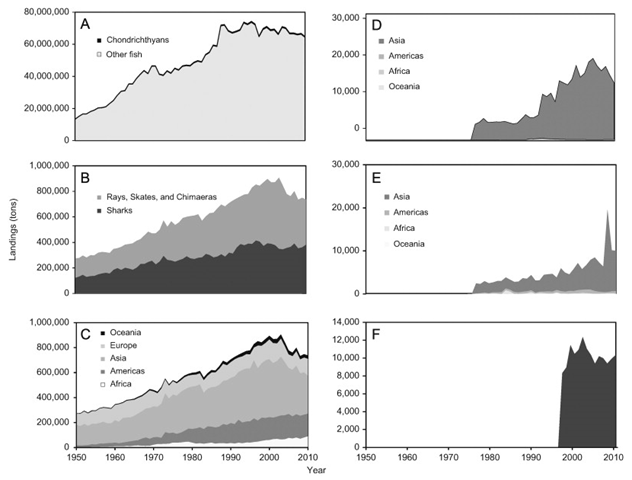Graph of the Day: Global shark landing trends, 1950-2010
ABSTRACT: Adequate conservation and management of shark populations is becoming increasingly important on a global scale, especially because many species are exceptionally vulnerable to overfishing. Yet, reported catch statistics for sharks are incomplete, and mortality estimates have not been available for sharks as a group. Here, the global catch and mortality of sharks from reported and unreported landings, discards, and shark finning are being estimated at 1.44 million metric tons for the year 2000, and at only slightly less in 2010 (1.41 million tons). Based on an analysis of average shark weights, this translates into a total annual mortality estimate of about 100 million sharks in 2000, and about 97 million sharks in 2010, with a total range of possible values between 63 and 273 million sharks per year. Further, the exploitation rate for sharks as a group was calculated by dividing two independent mortality estimates by an estimate of total global biomass. As an alternative approach, exploitation rates for individual shark populations were compiled and averaged from stock assessments and other published sources. The resulting three independent estimates of the average exploitation rate ranged between 6.4% and 7.9% of sharks killed per year. This exceeds the average rebound rate for many shark populations, estimated from the life history information on 62 shark species (rebound rates averaged 4.9% per year), and explains the ongoing declines in most populations for which data exist. The consequences of these unsustainable catch and mortality rates for marine ecosystems could be substantial. Global total shark mortality, therefore, needs to be reduced drastically in order to rebuild depleted populations and restore marine ecosystems with functional top predators.
Global catches, exploitation rates, and rebuilding options for sharks
